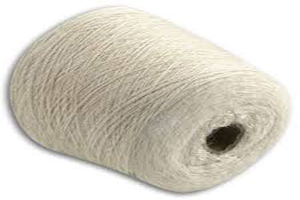
Wool turning into a yarn for all time weather
YarnsandFibers News Bureau 2014-02-17 12:45:00 – AustraliaWool is considered by many people as only a cold weather fabric but it regulates temperature better than any other material, Merino sheep originate from Spain while virtually all the world’s merino wool production comes from Australia. These animals have evolved to be comfortable in mostly hot, but changeable, climates. Soon wool is turning into a yarn for all time weather.
Cool Wool is in the vanguard of multiseasonal natural fibres. It’s a high-twist lightweight merino cloth that was seen at the recent menswear shows of Christopher Raeburn, Jonathan Saunders, Richard Nicoll, Lou Dalton and Paul Smith and is also a favourite among Savile Row tailors.
Cool Wool is a trademark of the Woolmark Company, which is owned by Australian Wool Innovation, a not-for-profit organisation that invests in marketing, and research and development to support Australia’s wool industry. First introduced in the 1980s, Cool Wool was refined for a relaunch in 2012, challenging the prevailing notion that wool is only for the depths of winter.
Designers and tailors who use it know that men are becoming increasingly knowledgeable about fabrics. Take Ed Buxton, who specialises in international property development at Crown Capital Partners in London. He says that he spends a lot of time travelling to and from the Middle East so lightweight worsted suits are a must. He has recently started wearing Cool Wool because it travels much better. It refuses to crease, even on long journeys and handles the transition from a hot environments to air-conditioned ones.
The weave is plainer and tighter in Cool Wool, because of the high twist of the yarns, and this accentuates the wool’s natural properties, such as breathability and thermoregulation. Cool Wool typically weighs less than 190g per sq metre, with fibres no greater than 22.5 microns (approximately three times finer than the average human hair). While that is some way off the 14.5 microns of a Super 180s worsted wool, which is one of the finest available, it is the high twist that sets it apart. Although Cool Wool is lighter, that doesn’t mean garments don’t hang and retain their shape as well as a classic, slightly weightier merino, as per Savile Row tailor Richard James, uses Cool Wool throughout his spring/summer collection.
The Chinese who were once the source of the world’s silk have now begun to produce fine merino cloths themselves, and at considerably less cost than in the historic milling towns of Biella in Italy and Huddersfield in England.
However, it would take a big shift in consumer attitudes before Italian or English labels had the woollen rug pulled from under their feet. Within China, the demand for cloth with luxury provenance is so great that, in September, Gieves & Hawkes signed up to the Woolmark Gold scheme, a seal of approval granted by the Woolmark Company for the Chinese region. The scheme guarantees a fibre thickness of no more than 19.5 microns and the wool must have been worked on by one of a group of 12 British and European Woolmark Gold-accredited weavers and spinners.
Italian fashion house Zegna has long focused on honing technical fabrics. Chief executive Gildo Zegna said that in recent years they have developed Cool Effect, which is the first pure-wool fabric that helps protect against the heat of direct sunlight, while last year it unveiled Techmerino, which Zegna describes as Pure merino wool that has been treated with special finishing techniques to create a highly breathable fabric. It facilitates the evaporation of watery vapour and provides perfect thermoregulation against cold and heat.
Market Intelligence
Ask for free sample Report

experience
Customer Base
dedicated team
Countries Served Worldwide









